5 Pests You’ll See in Summer Evenings
5 Pests You’ll See in Summer Evenings
The sun is setting over the horizon, casting rays of light that turn the faithfully blue sky into a swirl of pinks, oranges, and purples. It is finally cool enough that you aren’t sweating nearly as much as you were twenty minutes ago, which makes it easier to pack up the food and essentials that you brought to the lake or pool hours ago. While this is normally the time that we start winding down for the day and heading home to settle in for the evening, it is also the typical time that many pest species are just beginning their day. Some choose to hide in the cool soil during the day, while others invade homes and stay hidden in the darkest corners until nightfall. The five pests we’ll focus on today are a mixed bag of these two methods, but the common ground is that they will unfortunately invade our homes if they ever have the chance. Let’s take a look at these pesky pests and how they can turn rose-hued summer evenings into a clear nightmare.
Centipedes
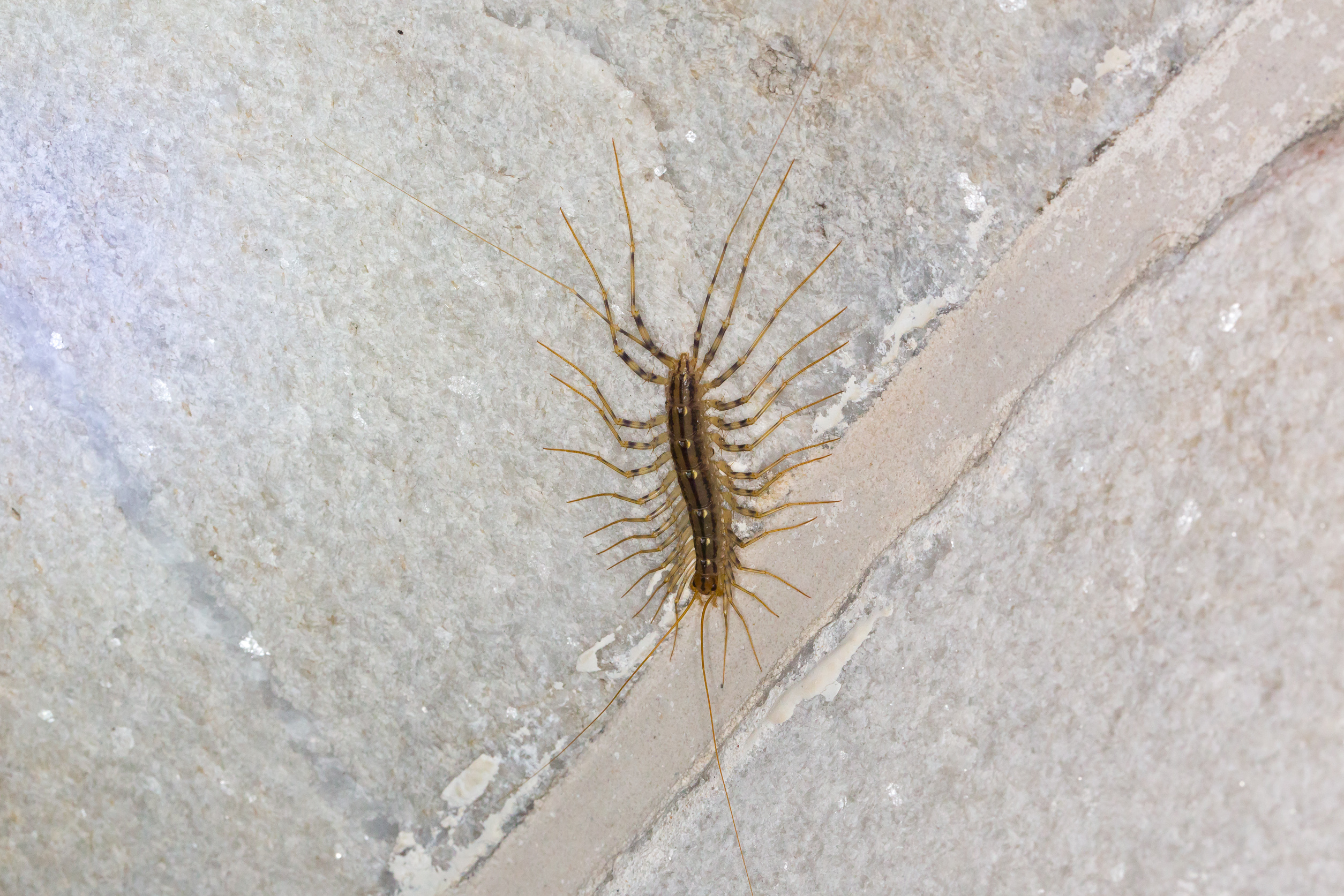
Speaking of nightmare fuel, centipedes are one of the creepiest-looking pests around. They are not as dangerous as certain other household pests, but they are still an unwanted guest in your home if they get inside. House centipedes have 2 antennae, segmented bodies, and 15 pairs of legs. They are about 3 to 4 inches long because of their spindly legs. The easy way to tell the difference between males and females is to look at their antennae; females have antennae that are twice the length of their bodies, while males have noticeably shorter ones. House centipedes love humidity and damp spaces, so they will immediately go to these spots within a house that they invade. These places are often in the bathroom, garage, and basement. House centipedes may seem like they would be painfully obvious if they invaded your home, but they are pretty decent hiders for being gangly terrors. They often enter homes through holes and gaps near pipes, and are more likely to invade homes that have an unaddressed leak somewhere inside.
Unlike many other pests, house centipedes can complete their entire life cycle indoors without any hassle. Their only non-negotiable is that they need to be kept constantly moist by their environment, so they cannot stay in a dry place for very long. House centipedes are carnivorous hunters and are quite skilled, despite some of them having terrible eyesight. They feed upon any smaller pests that happen to be in their area. This often includes flies, moths, spiders, and other house centipedes. If you find a house centipede in your home, it could be a sign of a different pest problem, a plumbing leak, or potentially both. Although these pests can give us these clear signs and even reduce the number of general pests in the house, it is best to keep your distance from house centipedes. They can sting with their front legs and bite with their venomous mouthparts. The good news is that they cannot puncture human skin and therefore aren’t very dangerous, but the point still stands. Besides, we can’t think of very many people who would willingly get closer to these creepy creatures!
Cockroaches
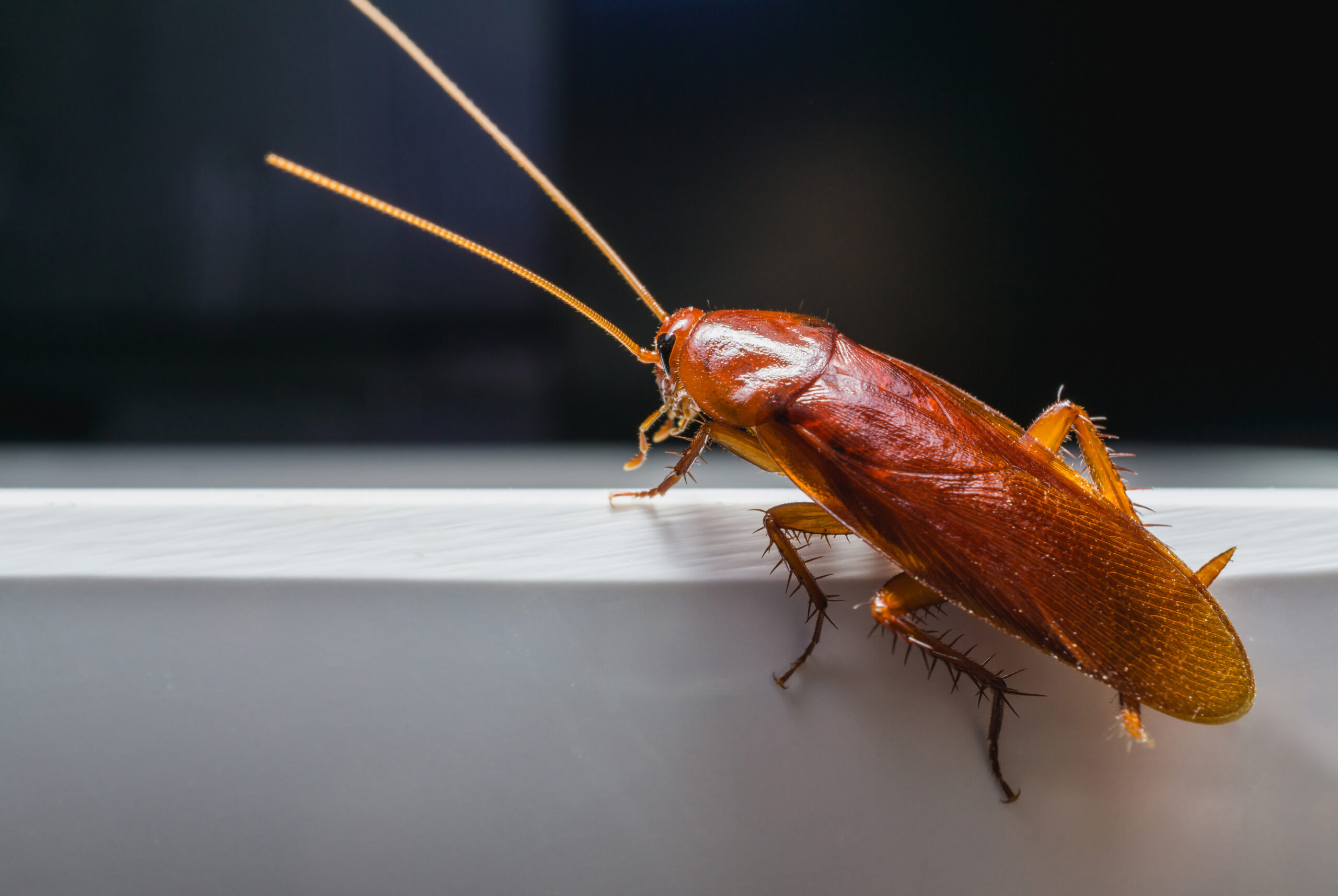
You may be starting to notice a pattern of nocturnal pests that love moisture, since cockroaches fit this description as well. These infamous pests are drawn to any place that is warm, dark, and damp, which subsequently means that they tend to live in the filthiest of places. Cockroaches often call sewers and drains their home, and they can use these tunnels to make their way into homes and buildings if they are willing to travel a ways (and they are). They emerge from their dirty, cramped hiding spots in the evening to start scavenging for food that will sustain them and their offspring. Roaches can be considered the garbage disposals of the pest world due to their diet that includes…well, pretty much everything. They eat a huge variety of objects and materials, including cardboard, glue, meats, paper, clothing, and feces. If roaches crawl on your floors and countertops after scavenging in the most disgusting of places, they will contaminate everything they touch and can transmit any of the countless harmful diseases they carry.
Besides the massive amount of bacteria roaches carry, they introduce other health risks to any home they invade. Their shells and droppings are known to stir up allergies and asthma in people who experience those. If anyone in your home starts experiencing worse symptoms, especially if they wake up with increased symptoms, it could be a sign of a roach infestation somewhere in the home. Their droppings look like coffee grounds, so be on the lookout for these dark specks in sheltered areas. If they had it their way, cockroaches would never be spotted by humans or pets. They like to stay hidden in the darkness, even if that is in a high-traffic area of the home like under the refrigerator or behind the washing machine and dryer. Roach invasions are usually more numerous in the fall since they will start mating and producing eggs that can overwinter in the hidden corners the adults find. All of this talk about how much roaches like to hide is not a coincidence. If you see any roaches during the day, call professional pest control immediately. Roaches are only spotted like this if the infestation is too large to be contained, so they can solely be controlled with targeted treatments, like the ones from Pointe Pest Control.
Crickets
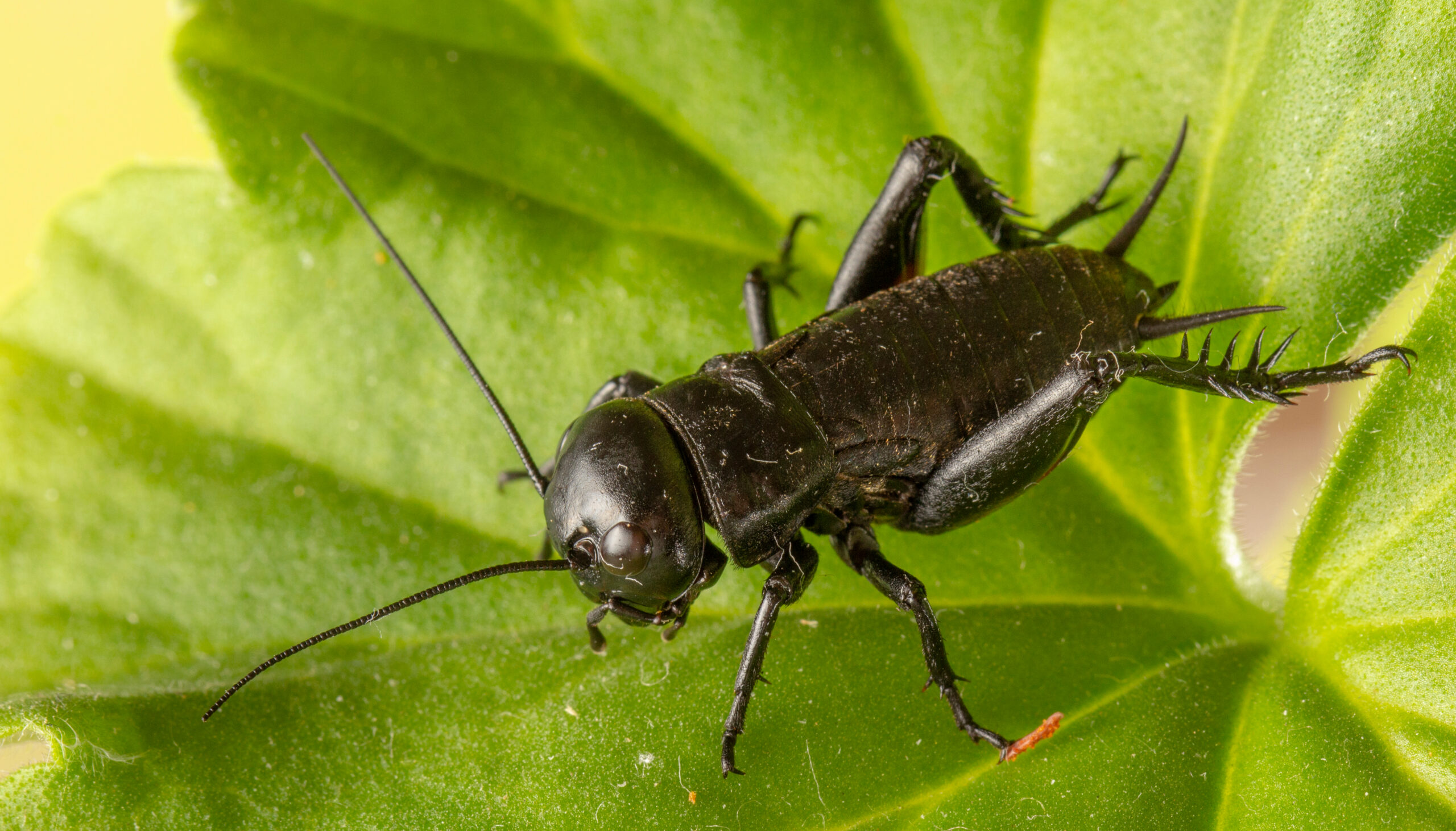
The chirping of crickets is synonymous with watercolor sunsets and melting popsicles in that it feels like an essential component of every summer. This chirping sound comes from male crickets rubbing their front legs together in a practice called stridulation. The specific sound depends on the cricket’s species, age, and size. It can be used for a number of communicative purposes, but the main one is as a mating call to nearby female crickets. The females will be more drawn to the faster, louder chirps since these are more common of the healthiest male crickets. These chirps provide a nice background song to summer evenings, but if the crickets get inside your home and into the walls (where they like to go), the appeal will wear off immediately. Think of the experience as having your own cricket concert in your house, but with the chirps amplified and echoed as you try to sleep that night.
Crickets have similar body structures to grasshoppers, except crickets have rounded bodies and are dark brown or black in color. They can be up to 2 inches long with a pair of lengthy antennae, and jump up to an impressive 30 inches in height. This ability is how they avoid being caught by predators — and humans — as well as get to their next food source more quickly. Crickets eat anything organic, such as flowers, plants, and insect larvae. They are usually happy to stay outdoors for their entire lives, but there are certain factors that can draw them into our homes if they catch sight of it. They are generally attracted to light, moisture, and heat, so they are often more drawn to houses at night when the interior lights are turned on. Crickets can squeeze through gaps in the siding, window screens, and door frames, then seek out a place to hide and start chirping their little hearts out again in the hopes of finding a fellow cricket in this strange new world.
Earwigs
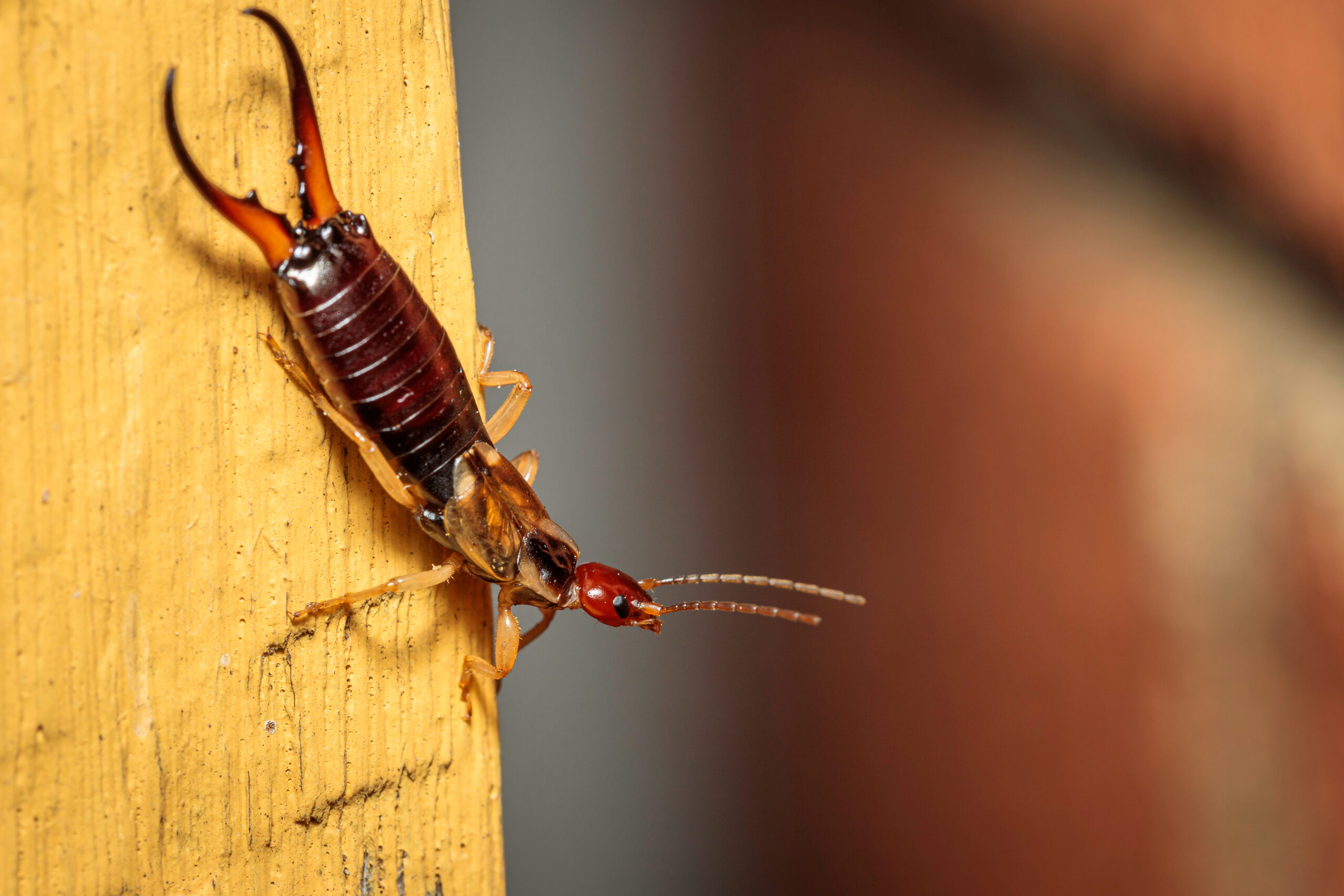
Thankfully, these pests look much more menacing than they really are. Earwigs are another pest that would much rather stay hidden from humans forever, so they try not to be spotted by us if they can ever help it. They love moist environments, so they tend to stay in the bathroom, laundry area, garage, or basement once they are inside. When they are outdoors, earwigs typically stay within the damp soil regardless of the time of day. They feed on decaying organic matter, placing them in the group of creatures known as detritivores that all share a common diet. Earwigs like to stay in gardens and thick greenery since they can find plenty of food in these areas, like decaying plants and dead insects. But all that glitters isn’t gold, since earwigs can also become garden pests when they don’t have decaying matter to feed upon. Their main target is leafy vegetables, so keep an eye on your lettuce if your garden boasts this salad staple!
Earwigs are the most active in summer due to the heat, so that is why we see them far more often this time of year. They are also attracted to light and will go towards any artificial light source once the sun goes down. This leads them right into our homes if they can find a gap to squeeze into, and they will then seek out a prime hiding place that is safe from us. In addition to loving moisture, earwigs like to be completely secluded by hiding under and within idle objects. This can include cardboard boxes, dirty laundry, appliances, and storage containers. Earwigs emerge to scavenge for decaying matter at night, and are usually met with a shoe or tissue if they happen to run into one of the house’s residents. Their sizable pincers on the end of their abdomen can actually pinch us if we touch them, but the pinch does not pose a danger beyond leaving us with a small red welt.
Silverfish
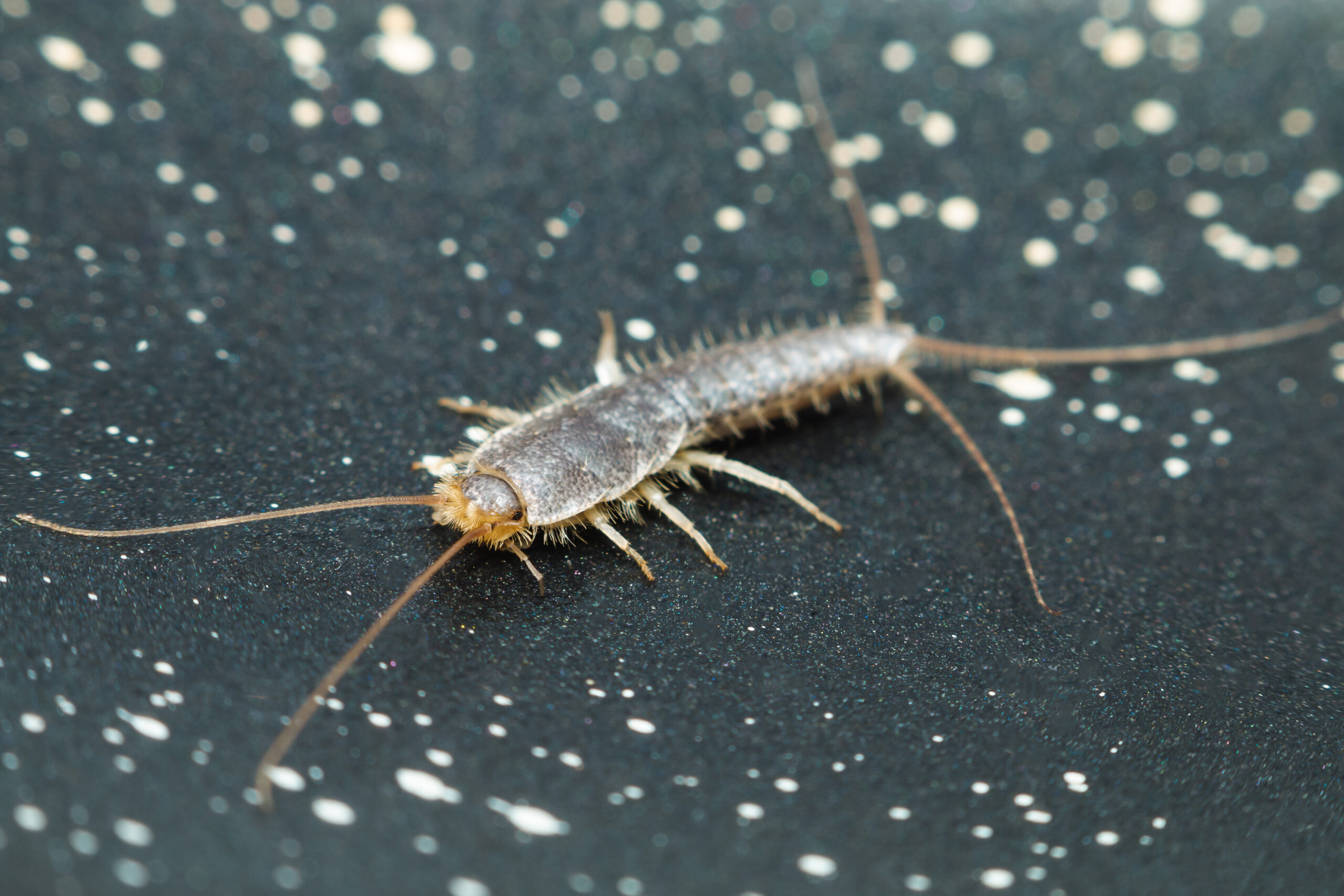
Silverfish look so strange and dissimilar to other pests that they seem to be in a class of their own. However, their intrusive habits and destructive diets make them just another pest that we have to keep an eye out for on summer evenings. Silverfish do not have wings and can be up to 3/4 of an inch long. Their long antennae help them to scope out their surroundings and find the most secure hiding spot in their new habitat. They also live much longer than the average pest, since they usually live anywhere from 3 to 6 years! This is why it is important to get a silverfish problem under control as soon as possible, since they could be taking up space in your home for the better half of a decade. True to the trends of this list, silverfish love moisture and darkness, so they are often found in the favorite locations of the laundry area, bathroom, garage, and basement.
Silverfish come out from their elusive hiding spots at night to scavenge for food, and they are willing to travel a little ways away from their daily shelter. They favor anything with cellulose or protein, and can eat a variety of items depending on what they find around their hiding spots. The frequent targets of silverfish include glue, book bindings, paper, cereals, flour, hair, and carpet. It is easy to spot silverfish, thanks to their shiny coloring and scaly appearance, but it is much more difficult to catch them than you might think. They are speedy and can run into cover at the first sign of danger. Because of this, silverfish are often discovered once their destruction is uncovered. They leave jagged chew marks in anything they eat from, especially in paper and books. Silverfish also leave behind yellow droppings that can stain light-colored items, and these droppings are more obvious when they are on the white pages of a book or journal. Silverfish are also immune to many insecticides, so they are yet another pest that needs to be treated by professional pest technicians in order to actually eliminate them.
Get a Good Night’s Sleep, Thanks to Pointe Pest Control
In general, humans go to bed later in summer than in winter because of two main reasons: the daylight can last until close to 10:00 pm, and it can be just too hot to even think about getting under the covers. So it makes sense that we want to have a full night of uninterrupted sleep — or as much as possible, depending on the younger residents of your home — for the hours that we do spend inside at night. A pest problem of any kind will bring a swift end to a peaceful summer evening, especially if there is a full-scale invasion occurring in a corner of your home that has not yet been uncovered. Whether you are looking to prevent invasive pests or are searching for solutions to a current pest problem, Pointe Pest Control is here to help! Our technicians are all highly-trained and experienced in the most efficient ways to treat dozens of pests. We begin each service with a complete inspection of the property in order to find all areas of pest activity and determine the species involved. We will then craft a treatment plan that is completely customized to solve your specific pest issues and prevent the creepy-crawlies from returning. Our eco-friendly products eliminate all kinds of common pests without using toxic chemicals, so you never have to worry about dangerous pesticides contaminating your home. Contact us today for a free quote on our thorough services and to learn how the Pointe Difference can also mean the difference between a peaceful evening and a pest-filled one!
Citations
Coelho, S. & Shein, N. (n.d.). Beware of these 14 pests that only come out at night. Bob Vila. Available at https://www.bobvila.com/slideshow/beware-of-these-14-pests-that-only-come-out-at-night-100826 (Accessed on July 17, 2023).
Eaton, E.R. (n.d.). Night-time noisemakers: Singing insects. Insectlopedia. Available at http://insectlopedia.com/night-time-noisemakers-singing-insects/ (Accessed on July 17, 2023).
Not a creature was stirring: Pests that come out at night. (2022, December 30). Fox Pest Control. Retrieved July 17, 2023, from https://fox-pest.com/blog/not-a-creature-was-stirring-pests-that-come-out-at-night/
Reel in these fun silverfish bug facts. (n.d.). Terminix. Retrieved July 17, 2023, from https://www.terminix.com/other/silverfish/facts/
Which bugs come out at night?. (2017, August 28). Griffin Pest Solutions. Retrieved July 17, 2023, from https://www.griffinpest.com/blog/night-pests/
Request a Free Quote Today
(We do not share your data with anybody, and only use it for its intended purpose)
